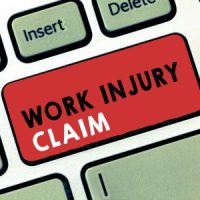What ‘No-Fault’ Means in Workers’ Compensation: An Explanation

Workers’ compensation is described as a ‘no-fault’ system. Many people are confused by what this means. Understanding what no-fault means in terms of workers’ compensation can make you more knowledgeable and empower you to safeguard your legal rights. Essentially, ‘no-fault’ means that liability is often not considered in workers’ compensation cases. In other words, liability usually does not affect an employee’s benefits. Read on to gain more clarity on the concept of ‘no-fault’ as it pertains to workers’ compensation claims.
No-Fault as It Pertains to Employer Liability
The no-fault aspect of the workers’ compensation system primarily protects employers from being held liable for work-related injuries. This means that when you file a workers’ compensation claim, you cannot claim negligence on your employer’s part. Liability is not a factor in workers’ compensation cases. You cannot assign liability to your employer and are not required to prove fault to receive benefits. The no-fault workers’ compensation system prohibits employees from filing lawsuits against their employers after a work-related injury. If your employer carries workers’ compensation insurance, your only avenue for recovering compensation is a workers’ compensation claim.
As is with many rules, there are exceptions to the no-fault rule. If, for example, an employer intentionally causes harm to an employee, they may be held liable. An employer may also be held liable if their actions amount to gross negligence, meaning the actions demonstrated a significant lack of care. However, these exceptions can be complex. You’ll need to speak to an attorney to determine if you can sue your employer.
No-Fault as It Pertains to Employee Liability
The no-fault principle also applies to employees. If you played any role in causing your work injury, such as through oversight or lack of preparation, you can still recover workers’ compensation benefits. Your employer cannot use your actions against you. However, there are certain situations where you may not be eligible to recover benefits. In Vermont, the law denies employees workers’ compensation benefits under the following circumstances;
- The injury was caused by the employee’s willful intent to injure themselves or someone else
- The employee’s intoxication caused the injury
- The injury was caused by the employee’s failure to use an employer-provided safety appliance
What Is the Purpose of the No-Fault System?
The no-fault system in workers’ compensation serves numerous important purposes, including the following;
- Streamlined claim process: Injured workers can receive benefits faster since they don’t need to establish fault. The no-fault system ensures employees get the support they need without unnecessary delays.
- Reduced litigation: The no-fault system reduces the likelihood of lawsuits between workers and employers, which helps save time and money.
- Offers financial protection for employees: The system ensures injured employees are compensated, regardless of fault.
In summary, the no-fault system aims to offer a fair and efficient way of addressing work-related injuries. This system is designed to benefit both employers and employees.
Contact a Vermont Workers’ Compensation Lawyer
Our Vermont workers’ compensation attorney at Sluka Law PLC can help you learn more about the workers’ compensation system. We can help you seek the benefits you deserve. Contact us today to schedule a consultation.
Source:
law.cornell.edu/wex/gross_negligence
